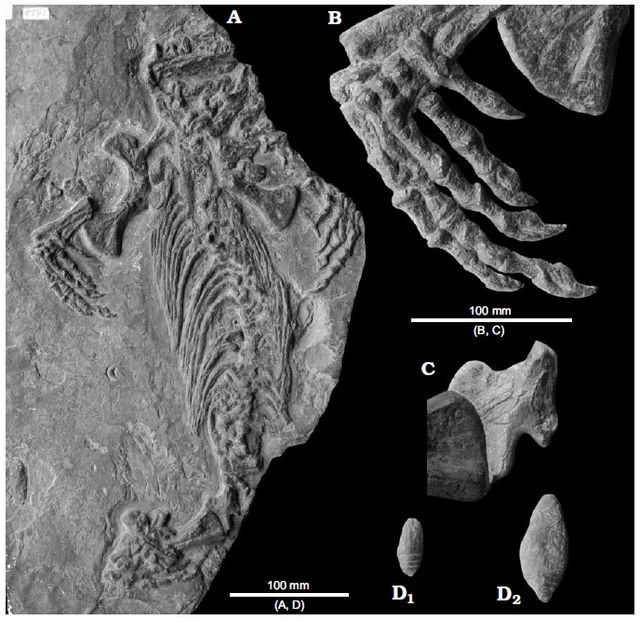Lalieudorhynchus is an extinct genus of caseid synapsids that lived during the Guadalupian in what is now the south of France. The genus is only known by its type species, Lalieudorhynchus gandi, which was named in 2022 by Ralf Werneburg, Frederik Spindler, Jocelyn Falconnet, Jean-Sébastien Steyer, Monique Vianey-Liaud, and Joerg W. Schneider. Lalieudorhynchus is represented by a partial postcranial skeleton discovered in the Lodève basin in the central part of the Hérault department in the Occitanie region. It belongs to an individual measuring approximately 3.75 m (12.3 ft) in length. The degree of ossification of its bones, however, indicates that it was a late juvenile or still growing young adult. Based on the internal structure of its bones, the describing authors interpreted Lalieudorhynchus as a semiaquatic animal that may have had a lifestyle similar to that of hippopotamus, spending part of its time in water but returning to land for food, though the idea that caseids were semi-aquatic has been previously contested by other authors. It is geologically one of the youngest known representatives of the caseids. The phylogenetic analysis proposed by Werneburg and colleagues identified Lalieudorhynchus as a derived caseid closely related to the North American species "Cotylorhynchus" hancocki.

Lalieudorhynchus
Caudal vertebrae (cast) of Lalieudorhynchus gandi in lateral view.
Image: Distribution of caseid synapsids in late Paleozoic Pangea
Image: Distribution of caseid synapsids in late Paleozoic Pangea detail
Caseidae are an extinct family of basal synapsids that lived from the Late Carboniferous to Middle Permian between about 300 and 265 million years ago. Fossils of these animals come from the south-central part of the United States, from various parts of Europe, and possibly from South Africa if the genus Eunotosaurus is indeed a caseid as some authors proposed in 2021. Caseids show great taxonomic and morphological diversity. The most basal taxa were small insectivorous and omnivorous forms that lived mainly in the Upper Carboniferous and Lower Permian, such as Eocasea, Callibrachion, and Martensius. This type of caseid persists until the middle Permian with Phreatophasma and may be Eunotosaurus. During the early Permian, the clade is mainly represented by many species that adopted a herbivorous diet. Some have evolved into gigantic forms that can reach 6–7 metres (20–23 ft) in length, such as Cotylorhynchus hancocki and Alierasaurus ronchii, making them the largest Permian synapsids. Caseids are considered important components of early terrestrial ecosystems in vertebrate history because the numerous herbivorous species in this family are among the first terrestrial tetrapods to occupy the role of primary consumer. The caseids experienced a significant evolutionary radiation at the end of the early Permian, becoming, with the captorhinid eureptiles, the dominant herbivores of terrestrial ecosystems in place of the edaphosaurids and diadectids.

Caseidae
Skull of Euromycter rutenus in ventral view allowing to see the numerous small teeth adorning the bones of the palate (the parasphenoid, triangular in shape in the center, and the very elongated pterygoids on each side). The hyoid apparatus is not present here because it was removed during the preparation of the palate.
Skeleton of Cotylorhynchus romeri on display at the Sam Noble Oklahoma Museum of Natural History.
Holotype of the faunivorous caseid Callibrachion gaudryi preserved on the back (A). Detail of the right hand (B). Right ilium covered dorsally by the proximal end of the femur (C). Coprolites of sharks placed on the slab of the holotype during the 19th century (D).








